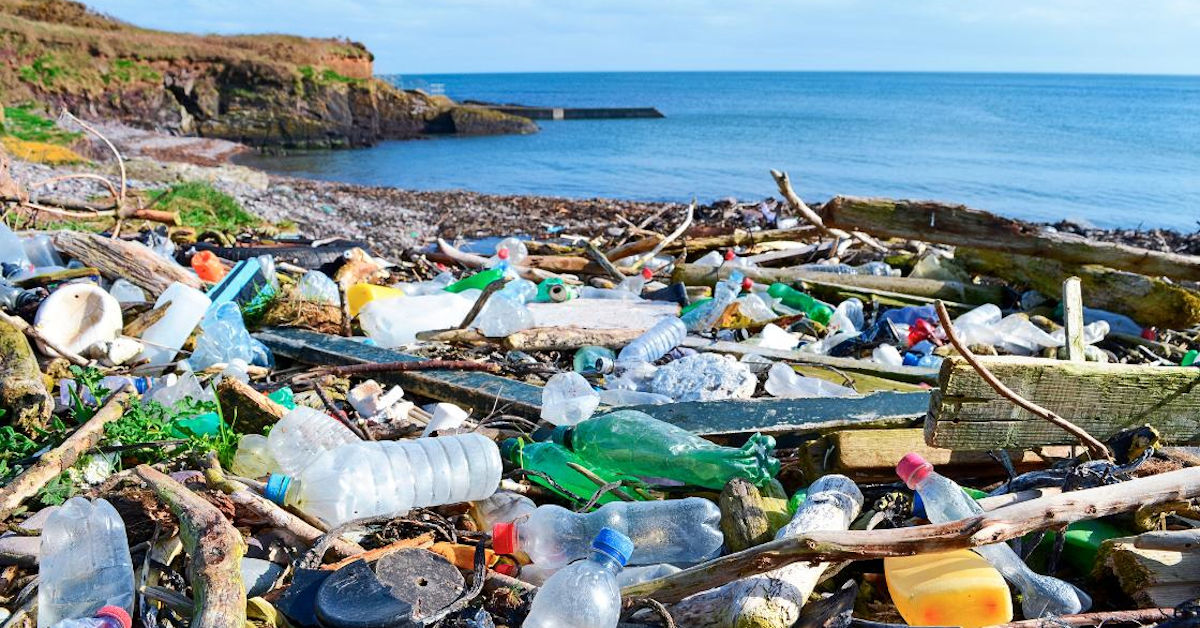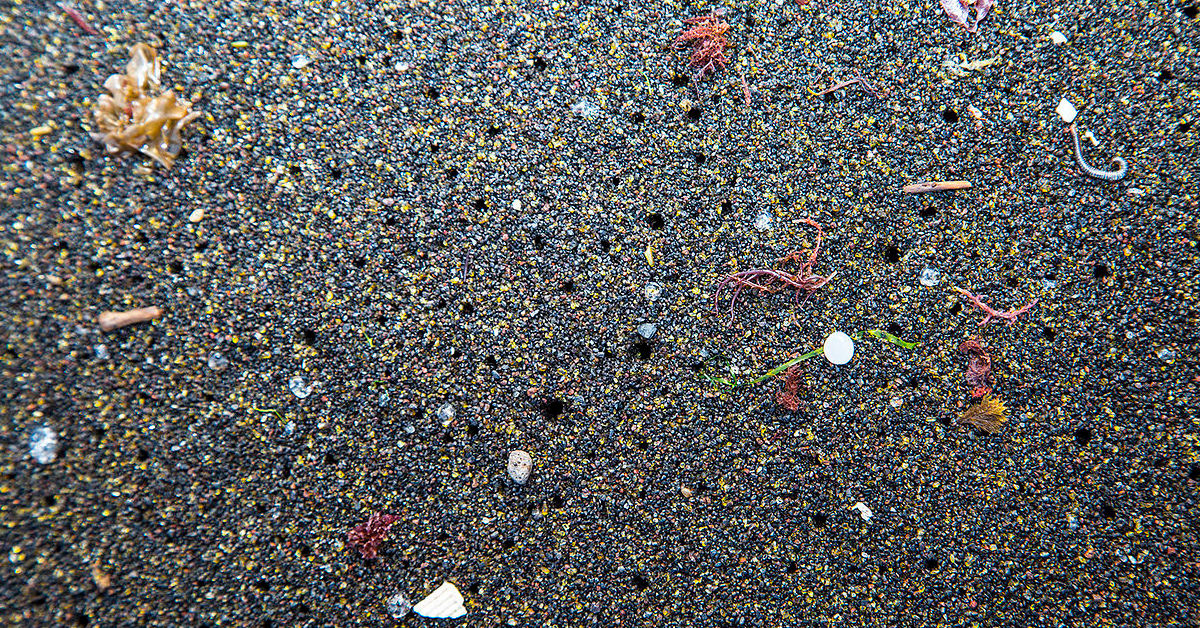The world is slowly waking up to the realisation that plastic pollution is a global problem. With alarming images of whales tangled up in ropes and turtles choking on plastic bags, the problem has attracted a vast amount of media attention in recent years. But a less visible and less talked about form of plastic pollution is equally as destructive and environmentally damaging – microplastics.
Microplastics, as their name suggests, are tiny pieces of plastic less than 5 millimetres across [1]. They can either be manufactured to their specific shape and size for use in cosmetic products, or formed naturally by the breakdown of larger plastics. The issue is that the qualities which make microplastics so desirable are also the reasons why they are so problematic and environmentally damaging. Their small, precise size means they are easily able to pass through water filter systems and get washed out to sea. Their durability means they are not biodegradable and therefore take hundreds or even thousands of years to break down.
As they accumulate in the environment, microplastics are known to be extremely harmful to all forms of marine life. They are commonly mistaken for food by many aquatic organisms, harming the growth, mobility and consequently survival of many creatures. Microplastics pose a significant threat to ecosystems all over the world and have the potential to affect human health via contaminated seafood. There is evidence that they can have a detrimental effect on soil too. [8]
But where do these microplastics come from? How can we limit their impact on both marine life and the wider environment?
Where do microplastics come from and how do they end up in the environment?

Image: gentlemanrook, CC BY 2.0, via Wikimedia Commons
Cosmetic products
Microplastics, sometimes referred to as microbeads, originate from a huge range of sources. They are commonly found in exfoliating face scrubs, toothpastes, lip balms, nail polish, shampoos and even laundry capsules. When washed down the drain, they are too small to be filtered out by sewage systems and therefore are directly discharged into rivers and oceans. A single shower can result in the release of 100,000 plastic particles, resulting in thousands of tonnes of microbeads entering our seas every year [2].
Washing clothes
Although a less obvious source of microplastics, washing your clothes can release huge amounts of plastic microfibres into the oceans. One fleece jacket alone can release up to 2 grams of microfibres per wash, equating to 250,000 microfibres! [3] These microfibres are usually too miniscule to be removed by wastewater treatments and so 40% of them drain into rivers and eventually into the sea.
Transport
As they wear down over time, tyres can produce small plastic particles. These tyre particles on roads and motorways can be transported directly to the ocean through the atmosphere. They can also be carried by rainwater into nearby rivers and sewers but as they are so small, they slip through the water treatment process. Researchers estimate this could put around 100 million square metres of the UK’s river network at risk of contamination by plastic particles [4].
Single-use plastics
Using single-use plastics in your daily life, such as plastic bags, water bottles, straws, take-out containers and any other plastic items that are used once and then disposed of, can contribute to the abundance of plastics littering the environment. This litter is then gradually broken down over time by processes such as weathering by waves in the ocean or exposure to sunlight and UV radiation, releasing thousands of microplastics in the process.
How can I reduce the impact of microplastics?

- Start checking the packaging of the cosmetic products you buy.
Microplastics are unlikely to be listed as a cosmetic product ingredient but the word ‘polyethene’ on the packaging suggests it contains plastic.
- Air dry your clothes.
The Plastics Pollution Coalition [9] states that air drying clothes, or even reducing their time in the dryer, can dramatically help reduce the number of microplastics produced by laundering clothes [5].
- Stop purchasing single-use plastics
Investing in more durable and reusable versions of single-use products will help reduce the amount of plastic litter in the environment, which consequently gets broken down into microplastics [6]. For example, you could buy washable fabric face masks instead of single-use medical masks.
- Recycle properly
Currently, only 9% of plastic is recycled worldwide! [7] It is so important to recycle your plastics as this helps keep them out of the ocean and reduces the amount of ‘new’ plastic in circulation.
- Support environmental charities and campaigns.
There are many environmental charities and campaigns out there that will benefit from any form of support you can offer and will work towards creating a cleaner and greener planet.
These ideas only scratch the surface when it comes to how you can help reduce microplastic pollution – there are many more ways you can protect the environment! Unfortunately, due to the current pandemic and an increase in demand for PPE, single-use plastics have recently experienced a huge upsurge across the world. Therefore, it is more important than ever to consider your environmental impact and do your bit to help where you can. To find out more about the work of The Word Forest Organisation, watch our short documentary #TreesAreTheKey narrated by Kate Winslet.
References
1. https://oceanservice.noaa.gov/facts/microplastics.html
2. https://www.globalcitizen.org/en/content/microbeads-ban-uk
3. https://www.zmescience.com/ecology/environmental-issues/microfibers-clothes-killing-fish-ending-plates/
4. https://theecologist.org/2020/may/28/sea-microplastics-come-car-tyres
5. https://www.bustle.com/p/6-ways-to-avoid-microplastics-because-research-shows-theyre-everywhere-18662490
6. https://www.oceanicsociety.org/blog/1720/7-ways-to-reduce-ocean-plastic-pollution-today
7. https://www.woi.economist.com/only-9-of-the-worlds-plastic-is-recycled/
8. https://phys.org/news/2020-09-impact-microplastics-soil.html
9. https://www.plasticpollutioncoalition.org/
Anna Williams and The Team





